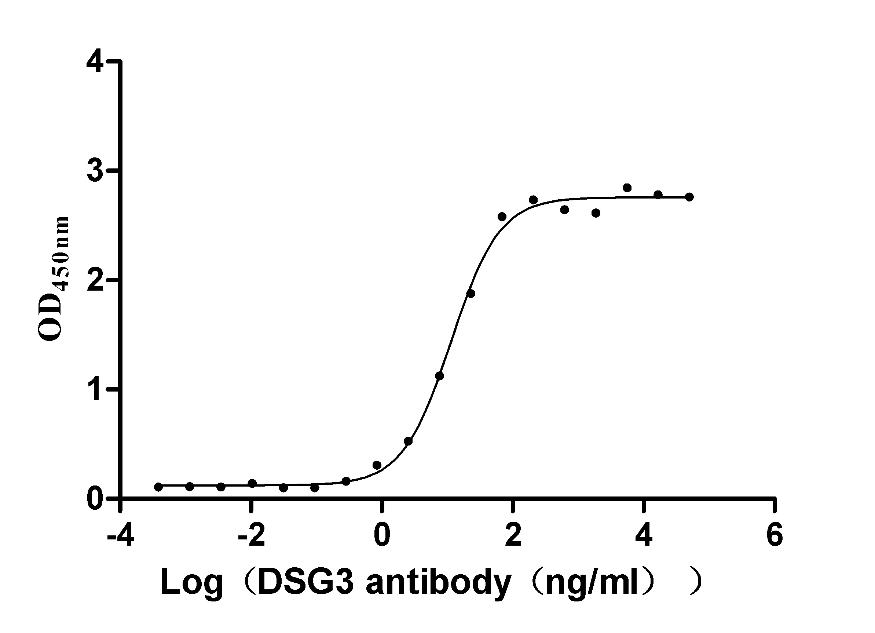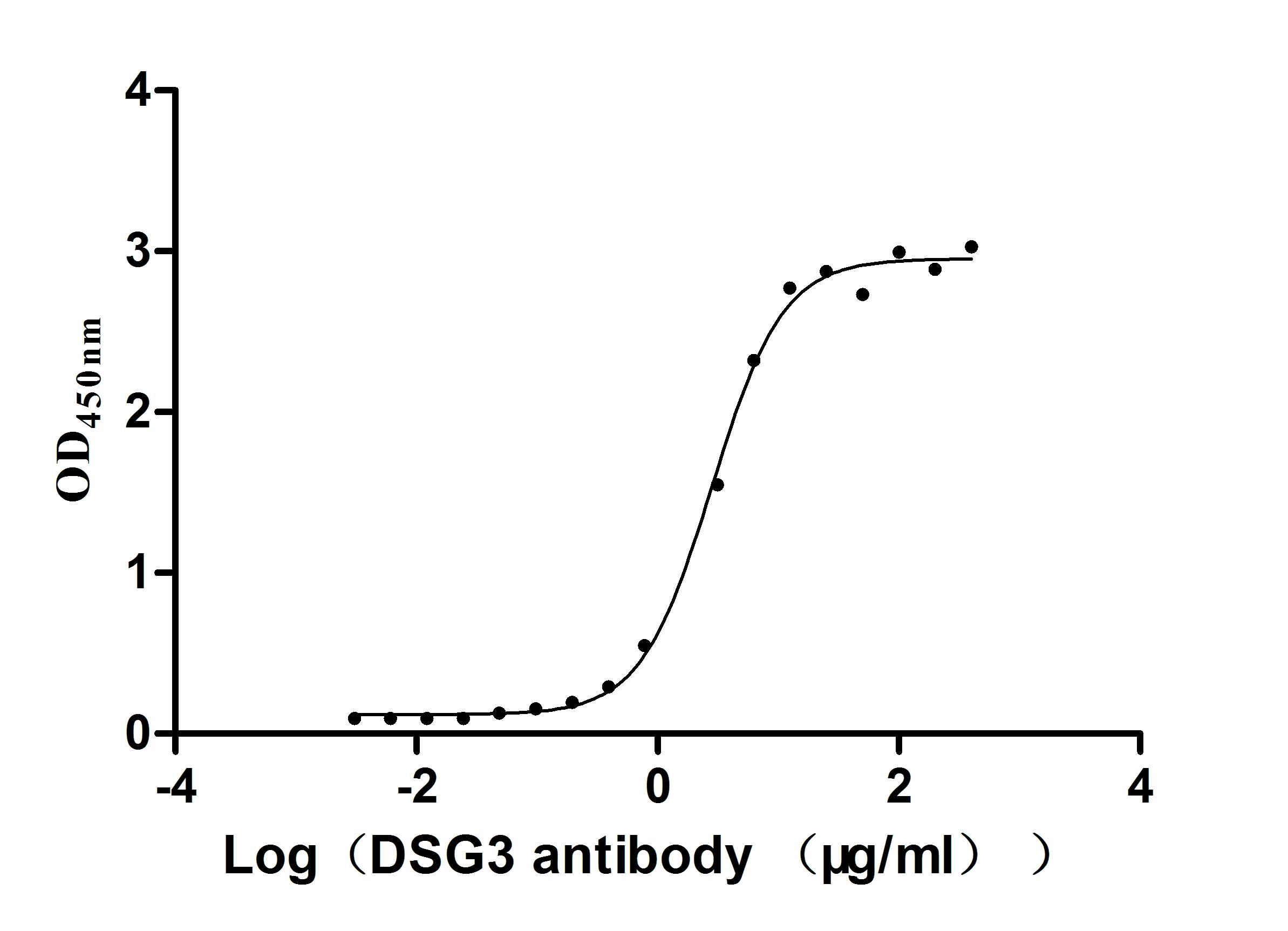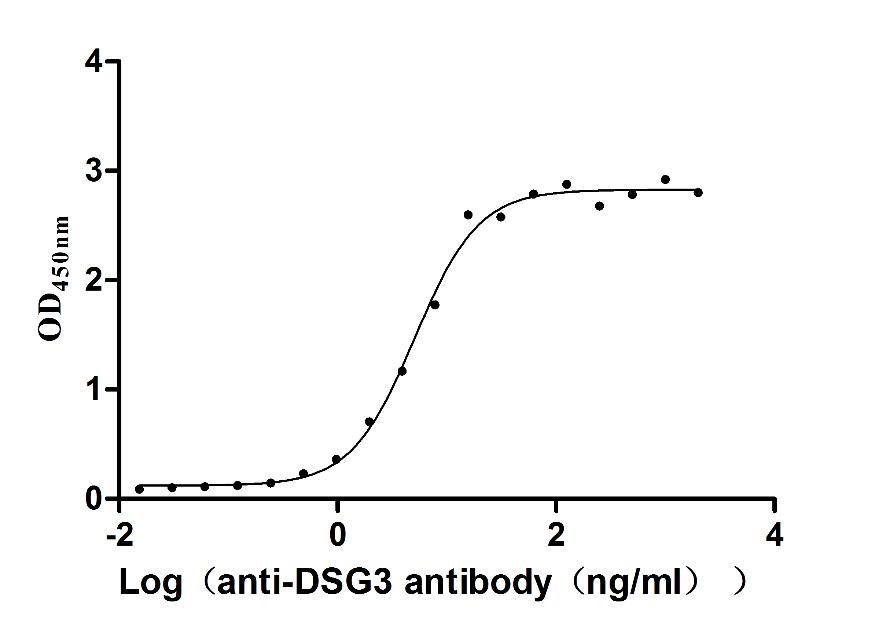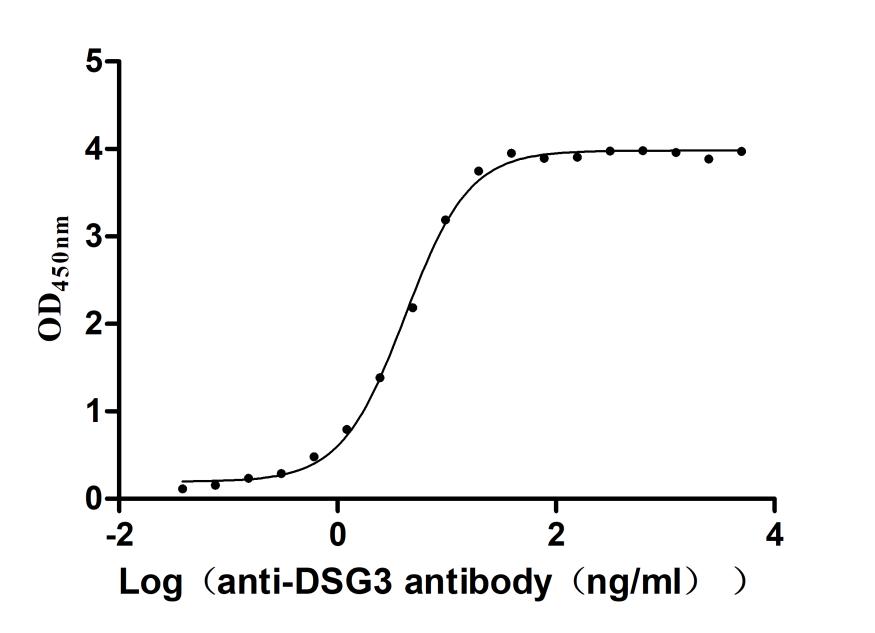The process of creating the DSG3 recombinant monoclonal antibody is complex and comprises several steps. Firstly, the DSG3 monoclonal antibody is obtained, and its gene sequence is determined. Then, a vector containing the DSG3 monoclonal antibody gene is produced and introduced into a host cell line for culture. A recombinant human DSG3 protein is utilized as an immunogen during DSG3 monoclonal antibody synthesis. The DSG3 recombinant monoclonal antibody is then purified via affinity chromatography and subjected to ELISA to evaluate its specificity. It reacts with human and mouse DSG3 proteins.
DSG3 protein is a transmembrane glycoprotein that plays a critical role in the formation and maintenance of desmosomes. Desmosomes are intercellular junctions that provide strong adhesive interactions between adjacent epithelial cells, which is important for the integrity and strength of tissues. DSG3 is specifically expressed in stratified squamous epithelia and is found predominantly in the upper layers of the epidermis, oral mucosa, and hair follicles. Mutations in the DSG3 gene have been associated with various autoimmune diseases, including pemphigus vulgaris, in which the immune system mistakenly attacks and damages desmosomes, leading to blistering and erosions of the skin and mucous membranes.









